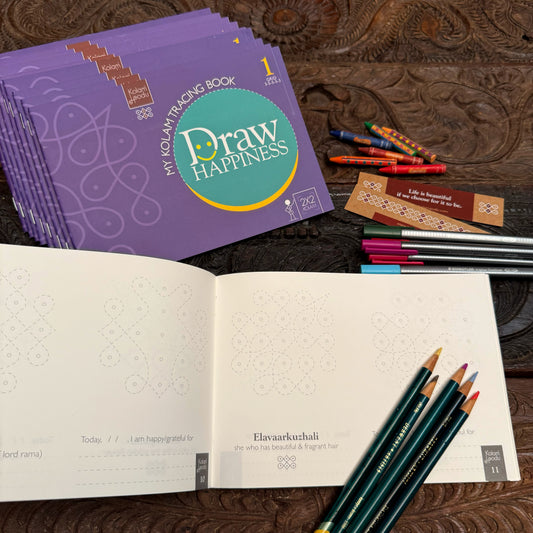Drawing kolams, a traditional Indian art form, enriches multiple intelligences. Linguistic skills thrive as stories behind kolam designs are shared. Logical-mathematical minds analyze intricate patterns, while spatial intelligence is honed through visualization. Though not musical, the rhythmic process enhances musical intelligence. Bodily-kinesthetic abilities improve with intricate hand movements. Interpersonal skills develop as people collaborate. Intrapersonal intelligence grows through introspection. Naturalistic intelligence benefits from nature-inspired designs. Contemplation fosters existential intelligence. Kolam is a holistic cognitive activity, promoting self-expression and cultural connection.
Drawing kolams, also known as rangoli or muggulu, is a traditional form of art in India, particularly in South India. Kolams are intricate and colorful geometric patterns created using rice flour or chalk powder on the floor. Engaging in this art form can provide benefits to various intelligences as proposed by Howard Gardner's theory of multiple intelligences. Here's how drawing kolams can help each intelligence:
- Linguistic Intelligence: This type of intelligence involves the ability to use language effectively, both spoken and written. While drawing kolams, people may use verbal communication to discuss the patterns, designs, and meanings behind the kolams. They can share stories, myths, and cultural significance associated with specific kolam designs, thus enhancing their linguistic abilities.
- Logical-Mathematical Intelligence: Individuals strong in this intelligence are adept at analyzing problems, making connections, and using abstract thinking. Creating kolams involves intricate geometric patterns and symmetries. The process requires logical thinking, pattern recognition, and mathematical skills to construct balanced and harmonious designs.
- Spatial Intelligence: Spatially intelligent individuals are skilled at visualizing, understanding spatial relationships, and creating mental images. Drawing kolams is an excellent way to develop spatial intelligence. Artists must visualize and plan the layout of the kolam, keeping the proportions and spatial relationships in mind to create a visually appealing design.
- Musical Intelligence: This intelligence involves a strong appreciation and understanding of music. People with musical intelligence exhibit talents in playing instruments, composing music, recognizing patterns in sounds, and expressing emotions through music. Though not directly related to music, drawing kolams can be a meditative and calming activity. Engaging in such activities can stimulate the mind and enhance one's musical intelligence by fostering a sense of rhythm and harmony.
- Bodily-Kinesthetic Intelligence: This type of intelligence relates to physical abilities and body control. Drawing kolams involves intricate hand movements and fine motor skills. Practicing this art form regularly can improve hand-eye coordination and dexterity, thus supporting bodily-kinesthetic intelligence.
- Interpersonal Intelligence: Interpersonal intelligence refers to the ability to understand and interact effectively with other people. People strong in this area are skilled at communication, empathy, and forming positive relationships. Working together on a kolam fosters cooperation, communication, and empathy, which are essential aspects of interpersonal intelligence.
- Intrapersonal Intelligence: Intrapersonal intelligence involves self-awareness and introspection. Individuals with high intrapersonal intelligence have a deep understanding of their own emotions, motivations, and thoughts. The process of drawing kolams can be meditative and reflective, allowing individuals to connect with their inner thoughts and emotions. It provides an opportunity for self-expression and introspection, enhancing intrapersonal intelligence.
- Naturalistic Intelligence: This intelligence centers around a connection to nature and an understanding of the natural world. Some kolam designs are inspired by natural elements like flowers, leaves, and animals. Drawing such kolams encourages observation and appreciation of nature, promoting naturalistic intelligence.
- Existential Intelligence: This intelligence involves contemplating deeper philosophical and existential questions. It relates to the search for meaning, purpose, and understanding life's complexities. While drawing kolams, individuals may contemplate the cultural and spiritual significance of the art form. It can lead to a deeper understanding of traditional beliefs and existential questions, nurturing existential intelligence.
Overall, drawing kolams is a multifaceted activity that engages various intelligences and offers a creative and culturally significant outlet for individuals to express themselves, connect with others, and explore different aspects of their cognitive abilities. Let's explore how kolam can help improve interpersonal, intrapersonal, spatial, and bodily-kinesthetic intelligences in particular as they are directly impacted from the art of drawing kolams.







